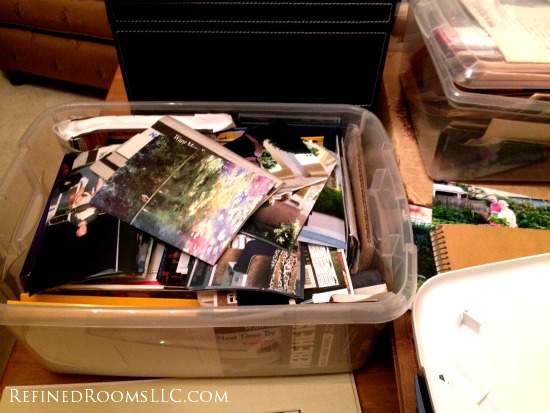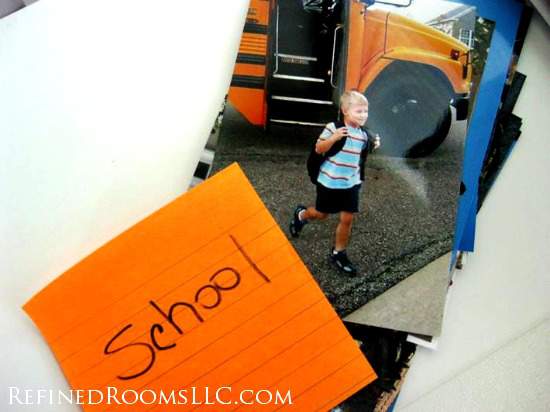September is National Disaster Preparedness Month, and it’s that time of year when photo organizers everywhere are posing questions such as…

Did you know that September 27th is Save Your Photos Day? As a member of the Save Your Photos Alliance, I feel that I have a mission to educate folks about the importance of having a system in place to protect your digital photos/videos in the event of a catastrophic data loss. A catastrophic data loss can take on many forms, including the accidental loss/theft of your computer, the destruction of your computer as the consequence of a natural disaster, hard drive crashes, or even an epic computer hack.

Creating a backup system for your digital photo and video collection does not have to be complicated or time-consuming. When creating your system, you should keep in mind the two key features of an effective backup: redundancy and automation.
Your collection needs to be backed up in multiple places
There’s a saying in the industry that your data should not be considered backed up until it exists in at least three places. Redundancy is your insurance against Murphy’s Law and just plain bad luck. Hard drives go bad, devices fail, and cloud services go out of business. If one, or even two of these things happen to you simultaneously, you’ll still have a copy of your precious memories in back up #3.
Keep in mind that your backup copies also need to exist in at least two physical locations so that the offsite copy can serve as insurance in the event that your house burns to the ground or is leveled by a tornado.
The back up process needs to be automated
The more you can create a backup system that doesn’t require any manual processing on your part, the less opportunity there is for human error to enter into the equation. We are busy, overwhelmed, and (let’s face it) lazy at times. So using backup methods that work in the background without any effort on our part sets us up for success!
My 4-pronged approach for safeguarding your photo/digital collection
1. EXTERNAL HARD DRIVE WITH BACKUP SOFTWARE
Purchase an external hard drive that includes pre-bundled automatic backup software. Your hard drive should remain continuously connected to your computer so that it maintains a consistent, real-time backup of your files (your digital photos/videos, as well as all of the other files that live on your computer’s hard drive). A typical 1 terabyte hard drive will cost approximately $100.

2. ONLINE “ALL PURPOSE” CLOUD SERVICE
There are many online data backup services to choose from, including Carbonite, Backblaze, and Mozy. I’ve used Carbonite for years and have been very satisfied with it. I’ve experienced two catastrophic hard drive crashes in the past few years, and was able to retrieve my data seamlessly from the Carbonite cloud service both times. Take some time to research the options; just be certain that the one you choose backs up your files automatically.
3. ONLINE DEDICATED PHOTO STORAGE SERVICE
I know what you’re thinking…a second cloud service? The all-purpose cloud services are great for a nuts and bolts backup, but if you have any desire to edit, organize, and share your photos, then I highly recommend uploading your photos and videos to a dedicated photo storage and sharing site as well. The only disadvantage is that for most of these sites, you’ll have to manually upload your files (but you’ve got an automatic backup in 2 additional locations, so it’s all good!). When choosing a service, here are a few important questions you may want to ask:
- What is the cost involved for the size of my digital collection?
- Are there any file size limitations?
- Can I download my images in full resolution?
- Can I control the privacy settings for my collection?
- Do I retain ownership of my images?
- What organizing and editing features are available?
- Can I create photo gifts, products, and prints directly from the service?
Some of my favorite photo storage services include Forever and SmugMug.
4. PRINT COPIES
Creating printed copies of digital photos counts as a back up method…believe it or not! Remember that a print photo can be scanned to create a digital photo in the future.
Some might consider my backup method “overkill”, but when it comes to my family’s memories and our legacy, I feel like there is no such thing as being too cautious. If this 4-pronged approach feels like too much to take on, or if you are not the type who spends a lot of energy fussing over your photos, just complete #1 and #2 and consider your back up system complete.
If you’d like hands-on assistance with implementing your photo backup system, schedule a free phone consultation to learn how I can be of assistance to you.
Want to learn more about Natalie Gallagher or Refined Rooms? Visit www.RefinedRoomsLLC.com or connect via: Facebook | Pinterest | Twitter | LinkedIn

















